A Pilgrimage to the Glaciers of the High Andes
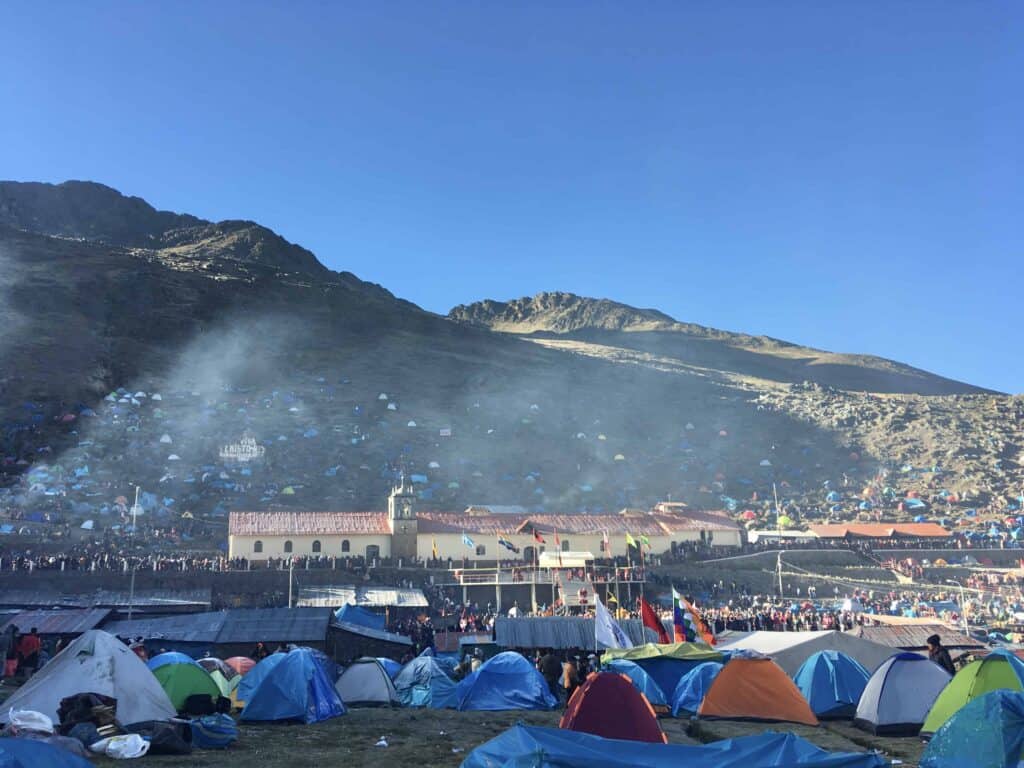
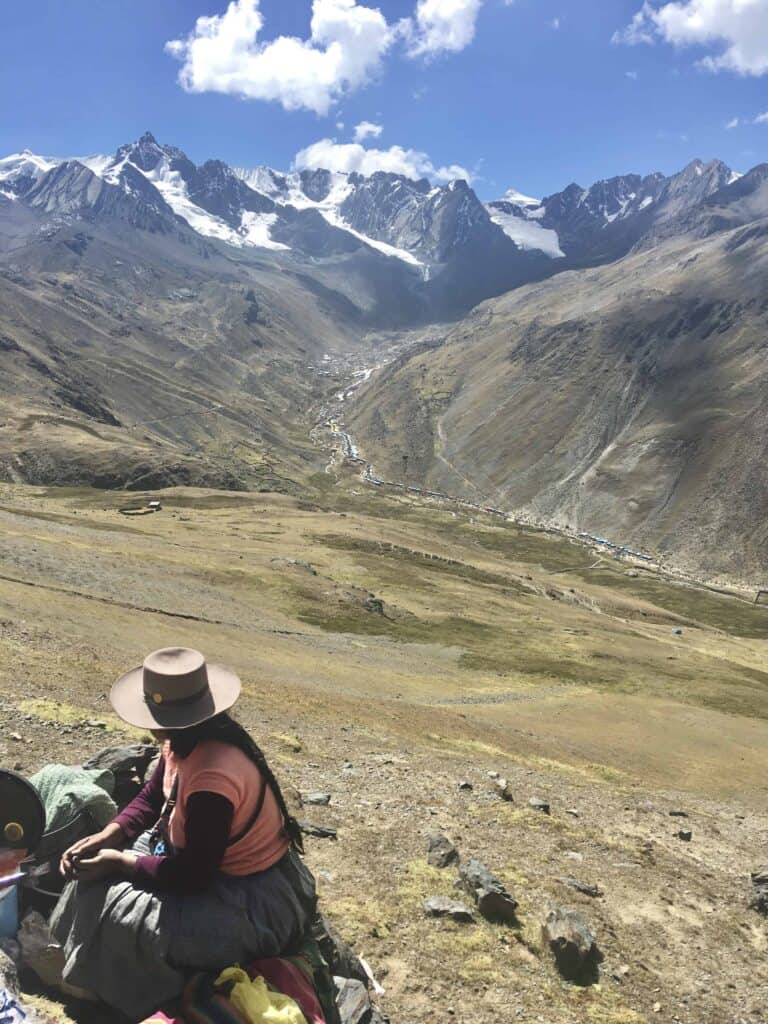
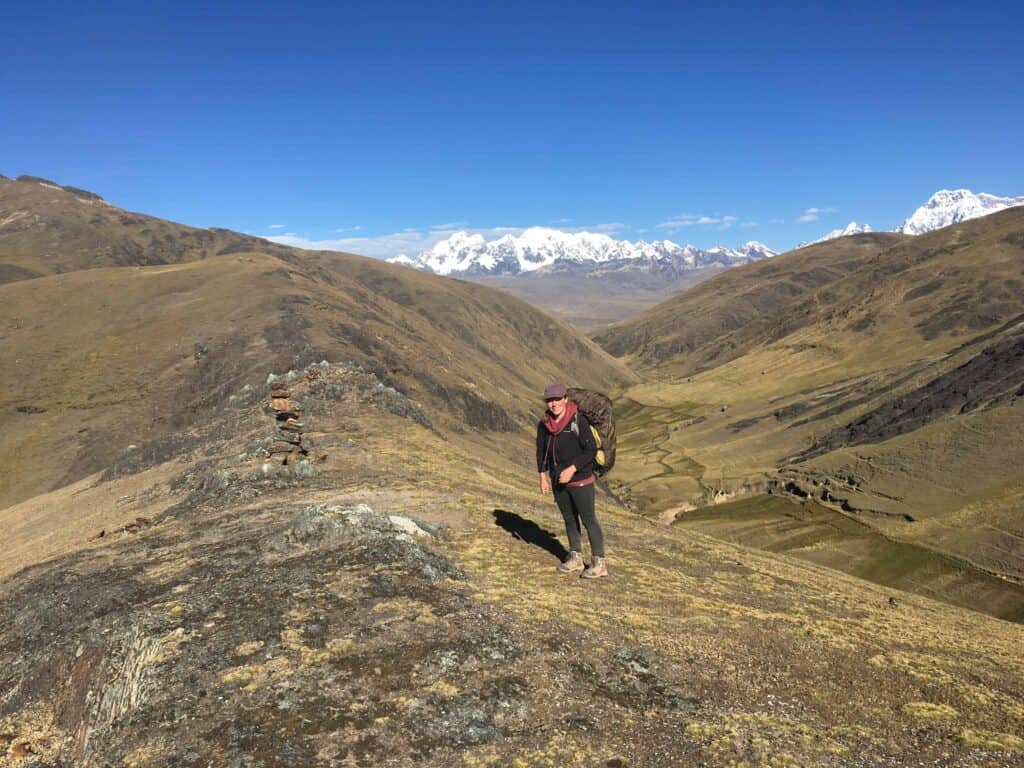
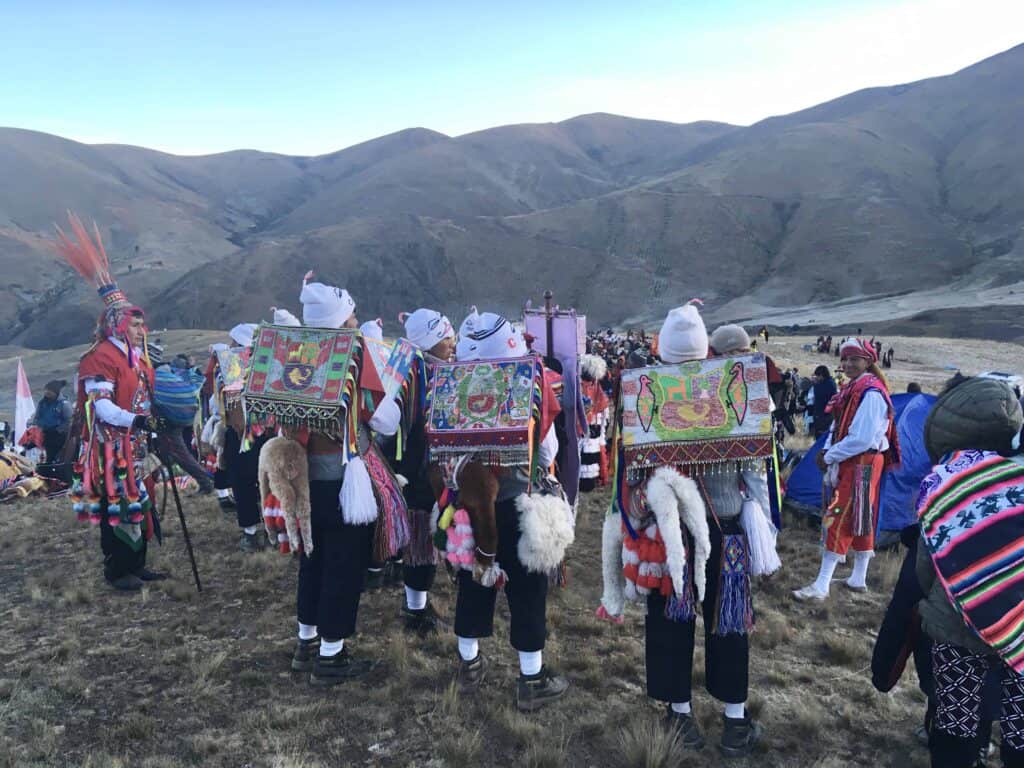
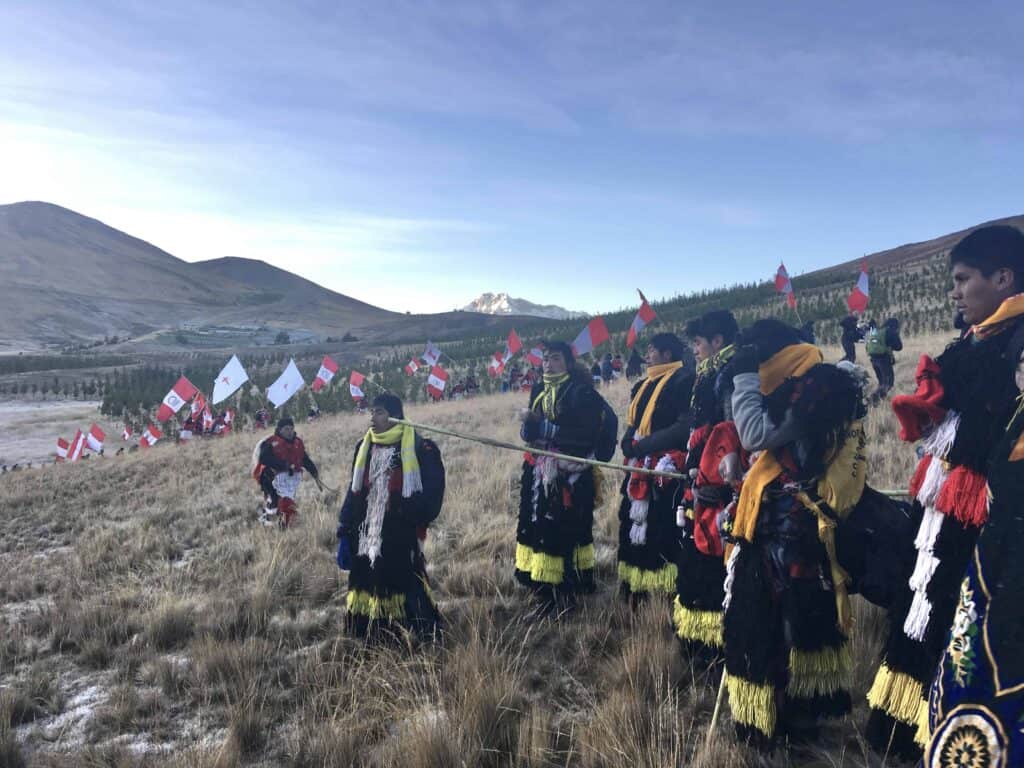
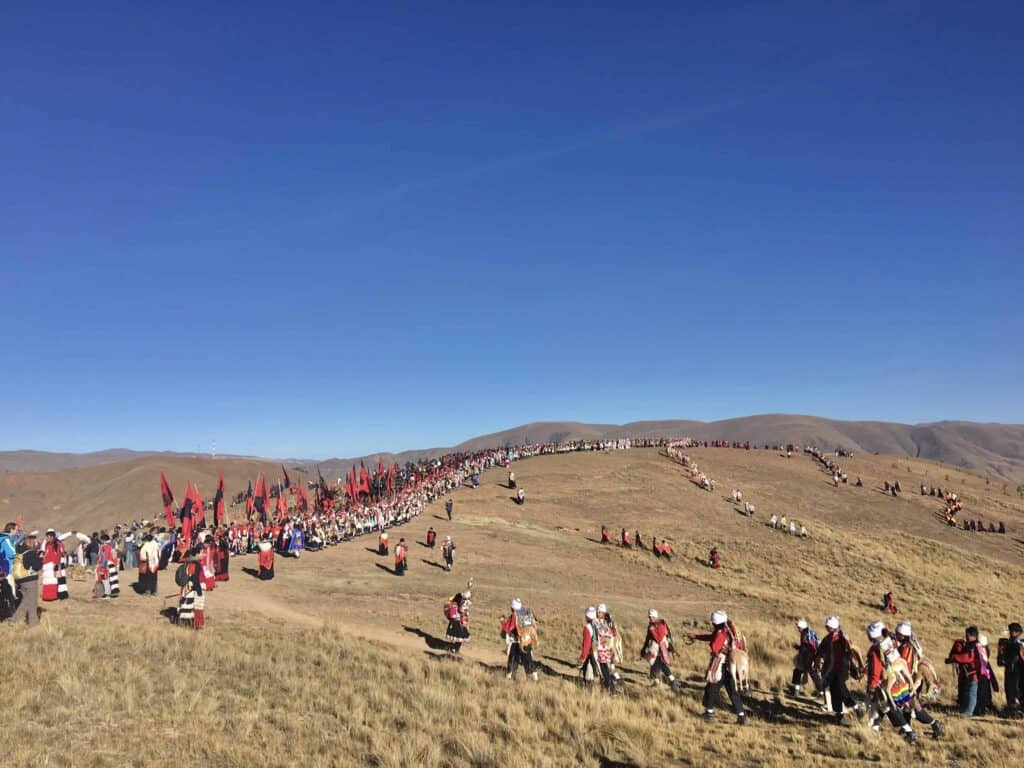
I can see my breath in the chilly pre-dawn light as my lungs work a little harder than usual to get enough oxygen from the thin mountain air. While my hands and feet are cold, my body feels warm from walking all night. Repetitive and lively melodies played on quenas (traditional Andean flutes) and drums accompany the movements of the people dancing around me. Everyone is cold and tired, but like birds singing on a tree branch, we’re waiting for the sun to rise. A long line of people forms along the ridge we’re standing on, as everyone instinctively faces the growing glow in the east. The snow-covered peaks of Ausangate (the highest mountain in the region of Cusco) are already dazzlingly illuminated off to our right. As the light gets brighter, we kneel down in the frost-covered ichu. The music and voices fall silent as the first rays of the sun appear over the horizon. Some close their eyes while others raise their hands to welcome the warmth in what must be one of the most-ancient and basic human rituals.
This ceremony of gratitude and respect to Tayta Inti (Father Sun) takes place on the final day of Qoyllur Rit’i, a pilgrimage with pre-Columbian origins that happens around this time each year, about three hours outside of Cusco. In late May or early June (depending on the date of the Feast of Corpus Christi, which happens a week later), thousands of people gather from communities all around southern Peru, piling into trucks typically used for farm animals, bundling their whole families together on small motorcycles, or taking collective buses from the city. Many begin their journeys in the middle of the night and arrive in the dark and freezing hours of the early morning, to begin the eight-kilometre trek from the small town of Mahuayani to the sanctuary of el Señor de Qoyllur Rit’i at the base of a large glacier and several snow-capped mountains. Women, children, old men and troupes of dancers and musicians begin the slow and cold upwards hike, eventually reaching their destination at almost 5,000 metres.
Most of these devotees speak Quechua, the Indigenous language of this part of Peru, as well as Spanish. During the time of the Incas (and before), Quechua was never a written language and that is why you will find so many different spellings of Qoyllur Rit’i, as well as of the names of other local places and mountains. The pilgrimage to Qoyllur Rit’i is often referred to as a syncretic religious festival, meaning that it grew out of a combination of different religions, cultures and ideas. Lots of the external imagery is clearly related to the Catholic Church. Wooden crosses and holy icons are plentiful, and the focal point in the high glacial valley is a temple built over a rock where it’s said that the image of Christ appeared in the late 18th century.
It’s clear, however, that this place was sacred long before the arrival of the Spanish colonizers, 500 years ago, and subsequent attempts of the church to inject Catholicism into pre-existing Andean rituals and traditions. Qoyllur Rit’i revolves around the importance of ritual, but not only the ones performed inside a church. Instead, it also celebrates and honours the natural world, the mountains and the traditions that existed in the Andes long before the Spanish arrived. It’s a living and breathing example of how local Indigenous communities managed to keep alive their traditional dances, music, costumes and identity during hundreds of years of colonization. They hid them in plain sight. Elements of Andean cosmovision were mixed and intertwined with Catholic ideology and managed to survive in this manner, to this day.
Qoyllur Rit’i is celebrated a few weeks before the winter solstice, and its dates coincide with the reappearance of the Pleiades constellation in the southern hemisphere. Delegations from eight naciónes (nations), comprised of dancers and musicians from eight different regions of Cusco, make the journey each year. Their costumes are largely made by hand and each element has a story and a significance. The choreography of their dances is imbued with historical and cultural meaning, and the notes of their songs are ones that have reverberated through these valleys and mountains for hundreds, if not thousands, of years. Coming to Qoyllur Rit’i is not something to be taken lightly. Even if one is not part of these comparsas (troupes), most people believe that one needs to make a commitment to come for three consecutive years. Some visitors come for only a day, but many spend several nights in the mountains and bring with them tents and tarps to rest under.
Most don’t rest much, however.
Crosses are carried up towards the glacier in special processions, people wait in long lines to go into the sanctuary to greet the image of Christ, and families gather at the base of the mountains and build miniature houses of stones to represent the ones that they one day wish to have. Strangers get symbolically “married,” and stalls line the trail, below the shrine, hosting a market selling toy cars, ceramic livestock, bundles of fake money and all sorts of representations of possible desires for the future. The nights are filled with different dances, fireworks, sacred initiations up in the mountain, and loud continuous music under the full moon.
Ukukus, traditional Andean dancers representing the mythological offspring of a woman and a spectacled bear, are a quintessential part of Qoyllur Rit’i. Sometimes also referred to as “pabluchas,” ukukus dance and play pranks, but they are also in charge of maintaining order, preventing excessive drinking and punishing any offenders. Qoyllur Rit’i is not a game. Preparations are made several months in advance: there are rules and codes of conduct and, for many who attend, it’s a very serious and important part of their year. For some, it’s about deepening their faith; for others, it’s a time of cleansing or a type of penance. People come to make offerings, to ask for a blessing or to seek healing (both physical and spiritual). Historically, ukukus were the only ones allowed to climb up to the sacred glacier where they would collect blocks of ice that were believed to have healing properties. The water from the melted blocks would be taken home to bless the fields and to bring good luck to the communities. This is, however, no longer done because of a growing awareness of how rapidly the glacier has been retreating.
It’s said that the Peruvian Andes are home to more than 70 per cent of the world’s tropical glaciers andthe Cordillera Vilcanota (the mountain range where Qoyllur Rit’i takes place) includes almost 500 of
these glaciers.
Long-term shifts in weather patterns and temperatures are being observed everywhere, and Peru is no exception. The dry season is becoming longer, water more scarce; and abnormally high UV index readings, more common.
To the Indigenous Quechua people of the Andes, the mountains have spirits. They’re referred to as Apus and protect the people and animals who live near them. Traditionally, offerings to these divine entities were woven into Andean daily life but gradually have become forgotten as more and more people move to cities. The accelerated melting of these glaciers, whether it’s caused by consumerism and burning fossil fuels or by a forgetting of ancient traditions and a lack of offerings to the mountain spirits, is clearly a symptom of an imbalance in the world.
The fact that glacier ice was used as holy water seems quite profound now. Most visitors leave via the same path they came, but a few groups spend several nights in the glacial basin and eventually continue the pilgrimage for 24 more hours, carrying with them the images of the Virgen Dolorosa and the Lord of Tayancani, through the night, to receive the sunrise, Inti Alabado (the praising of the sun), before descending to the town of Tayancani. The long trek from the base of Apus Sinakara and Qolqepunku, to this area, is an example of the internal fortitude of these comparsas. They dance and play their music all day and night, with no sleep, fuelled only by their faith and maybe a few leaves of chewed coca. Views of Apu Ausangate accompany them in the distance, and the stars of the Milky Way and the light of the moon guide them during the last few hours before they wait in a long line to greet the sun. They then continue on dancing in rows, over the dry, grass-covered hills, to eventually arrive in Tayancani and then make their way back to their communities. Next year, they will come back to these mountains to once again show their devotion and love for the Lord of Qoyllur Rit’i, as well as the Apus and Pachamama (Mother Earth), hoping to still find the life-bringing glaciers of the Andes waiting for them.




